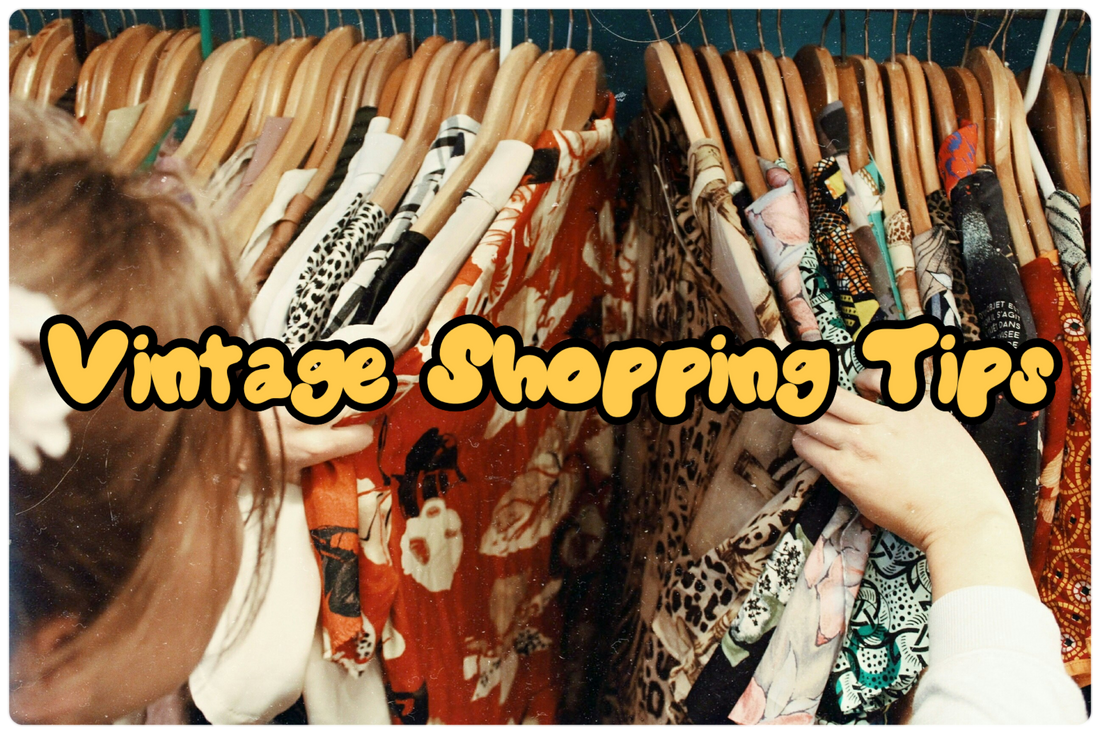Benefits of Buying Vintage
One of biggest benefits of buying vintage clothing instead of brand new is that you are making a sustainable choice while also helping a small business survive. It's one of the most ethical clothing purchasing decisions you can make on this planet that is brimming with existing garments!
On top of that, you have access to unique items that you're not likely to see anyone else wearing. No unauthorized twinning!

It is also a lot more affordable compared to high-end or luxury clothing while still often providing high quality, often from now-defunct or forgotten labels. It can also be more affordable than even mid-tier brands. Just don't compare to unethical fast fashion prices.
You get to take home a little piece of history! It's so fun researching different labels and hunting for specific ones and even starting a collection in your wardrobe of highly curated pieces as your tastes develop!
Getting into vintage will give you a greater understanding of the fashion cycle and allow you to make more informed choices overall. That will give you the tools to effectively hone in on and perfect your individual style.
Below is a list of tips everyone should know when shopping vintage.
Vintage Shopping Tips:
Know your measurements! Measure yourself at home or get a friend to help. At a minimum, memorize your bust, waist, hip and inseam measurement or write it in your phone's notes. Bring a measuring tape with you if you're shopping in a physical store as often the measurements will not be on the tag and vintage sizing labels are often irrelevant. Consider the fit when you're measuring. Can it be worn oversized, cropped or baggy? For fitted garments, you want those measurements you took to match up. You may also want to compare it to an existing piece in your wardrobe that fits exactly how you want. If shopping in person, be sure to try vintage on before buying. If that's at a vintage market or show, wear tight clothing so that you can put things on over top as there will be limited or only communal dressing rooms. If you're shopping online, check seller return policies before buying in case it doesn't fit right (at least vintage sellers won't burn or dump their returns like fast fashion sellers do). Most sellers will have comprehensive measurements on their online listings. Send them a message if you're unsure.

Do the sniff test! 1970s polyester is one of the biggest culprits for holding onto odours. Know that these garments have lived a life. They may have perfume or scented detergent odours. They may be musty from sitting in a closet or the previous owner may have been a smoker. Most odours can be removed depending on the fabric but it's definitely a consideration.

Be open to doing repairs, alterations and stain removal. Just because a garment has a small imperfection doesn't mean it's time for landfill! Let's all do our best to repair where we can. Some visible repair methods can be beautiful! Also, know that it's very easy to shorten a hem or replace buttons. If you don't know how to sew, your local seamstress will be able to help. These small alterations can be done at affordable prices. For older vintage, more work might be required to replace a lining for example. Consider if the item is worth it to you to put in some extra work. There are a lot of incredible tailored pieces from the 40s and 50s that just need their linings replaced and they deserve it!
Eucalan wool detergent is great for laundering delicate vintage items, so keep it in mind! Be prepared to properly care for and store your garment to make it last.
Also consider dye jobs on natural fibres to bring a garment back to life or correct a discolouration issue.
However, also know that some things aren't fixable. In this case, you might want to completely rework the item into something new or copy the pattern to build a sister piece if the cut is special. Keep an open mind about the possibilities!

Enjoy the thrill of the hunt! Set aside adequate time to hunt for the piece you're after. Vintage shopping can be overwhelming, so you might want to keep a list of specific things you're looking for and what colours you want in your wardrobe. It can take time to find what you need but enjoy the ride and you'll discover incredible things with vintage resellers all over the world. Follow their social media profiles so you don't miss out. One of a kind pieces go fast!
Understand pricing. A vintage item will be priced according to the label, fabric, quality, rarity, condition, desirability, what the vendor originally paid and where or how they acquired it in the first place. Vintage sellers travel all over sourcing the items in their shop and are predominantly small business owners not making much profit. Know that curated vintage sourced for a vintage store is not going to be priced the same as a stray piece of vintage that was donated to a thrift shop. Haggling and bargaining is common but please be courteous to the shop owner and only make fair offers.
Try to become familiar with brands and fabrics so that you can make good choices and also understand why something might be priced higher. Assess quality by examining closures (eg, metal or plastic zipper?), lining (or lack thereof), condition (does it need work?) and construction (is it well made and built to last?).
We hope these tips help you on your vintage shopping adventures! Watch out for our next post all about identifying and dating vintage, as well as assessing clothing labels 🏷️


